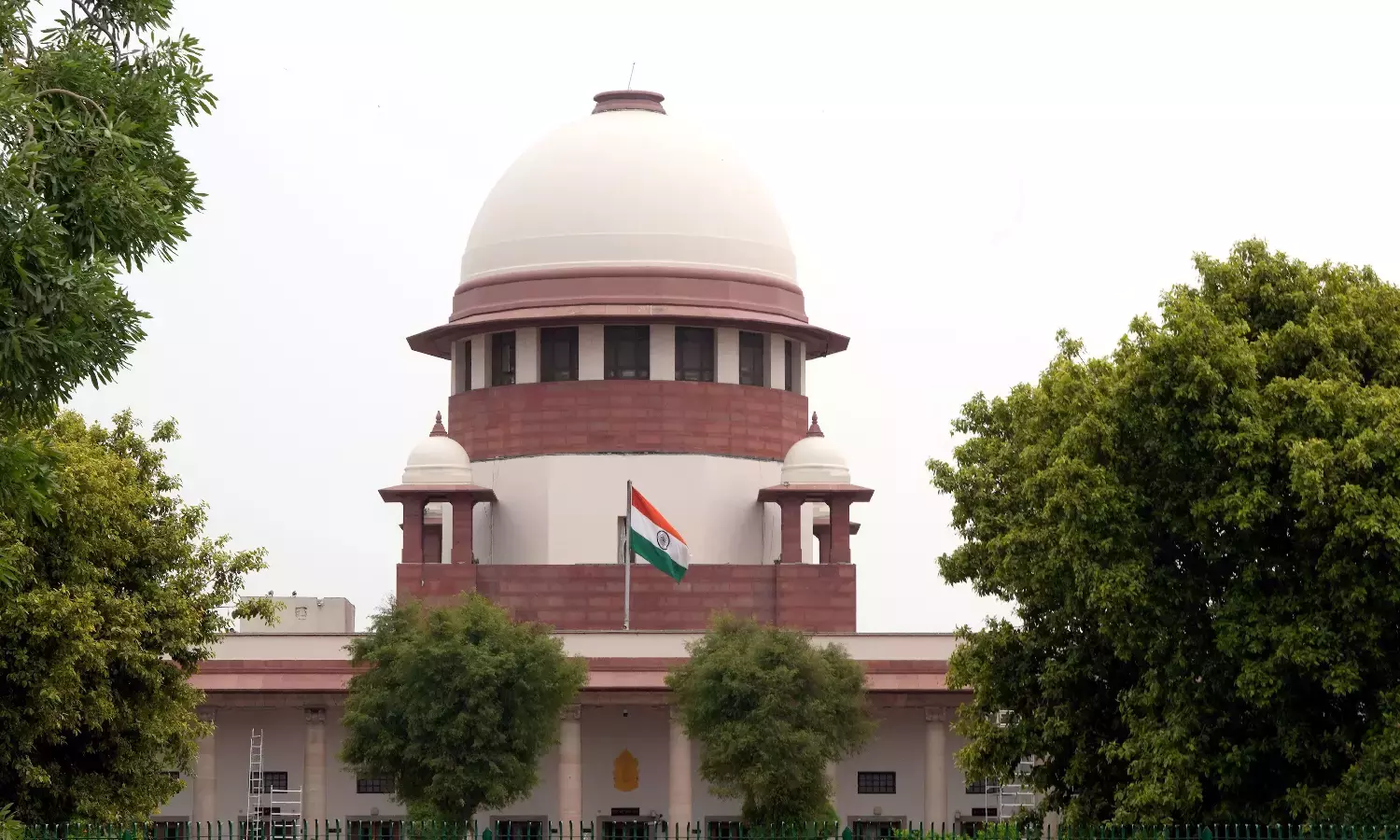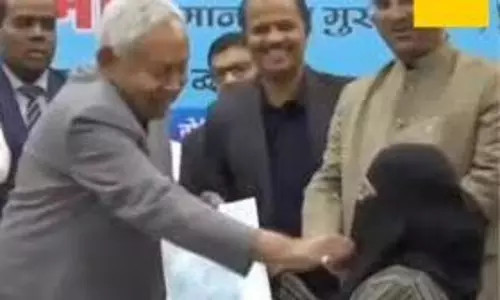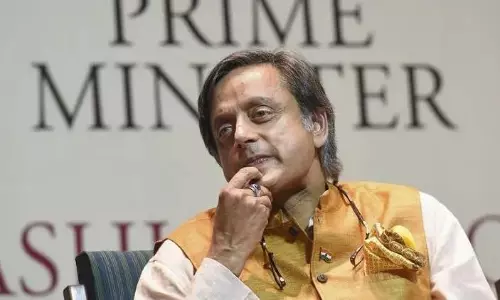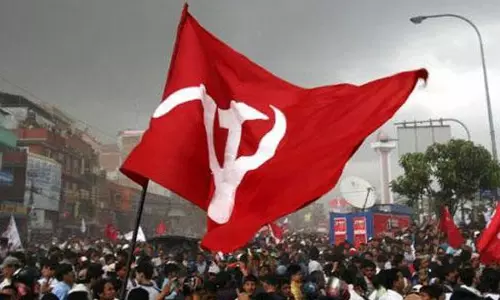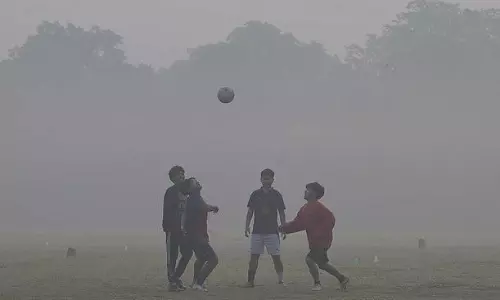
Those who delude themselves about uprooting Ambedkar
text_fieldsWhile the 134th birth anniversary of Babasaheb Ambedkar - the architect of the Constitution who relentlessly fought against injustice and inequality - was celebrated across the country and even at the United Nations on the 14th, a group of police officers in Uttar Pradesh were engaged in a different kind of "karseva". In the first week of this month, they set out to remove statues and memorials that evoked the memory of Dr. Ambedkar. Police stated that the Dalit community in Khantari village, Lucknow was found to have violated the law by erecting an Ambedkar statue without obtaining permission from the authorities. The police team, accompanied by the Sub-Divisional Magistrate, arrived to demolish the statue, but the people strongly resisted. Even though they used batons and tear gas, the crowd surrounded the statue with chants of "Jai Bhim", forcing the officials to retreat. It is true that official permission to install the statue had not been granted. However, this wasn't a recent development - for nearly three years, the Dalits of Khantari had been visiting government offices seeking approval for the Ambedkar statue project, which had been unanimously approved by the village council and the local land use committee. Despite this long wait, they received no response which prompted them to go ahead with the installation. That was when the administration sprang into action, suddenly invoking laws and procedures.
What happened in Khantari is not an isolated incident. On Ambedkar Jayanti, in the village of Jarbo in Jhansi district, Dalits installed a statue spending around fifty thousand rupees, intending to unveil it on the 14th. But on the 12th, a team of police and revenue officials arrived and removed the statue. Cases were also filed against the Dalits. The allegations - installing the statue without permission and placing it on public land owned by the government - are understandable. However, the village head who belongs to the Dalit community told local media that the statue was installed with the unanimous support of the villagers and that they had not received the required official permission despite trying. However, it is when we look at the charges and sections invoked by the police that the true nature of the administration and the dominance of casteist prejudice become clear. The narrative spun by Yogi’s communal and caste-biased police is that the installation of the Ambedkar statue created hostility between different caste groups and posed a threat to social harmony. But shouldn’t it be those who feel threatened or provoked by the sight of the statue of the architect of the Constitution who need to be dealt with? In Sitapur, when the people refused to comply with the Sub-Divisional Magistrate’s final order to remove the statues of Ambedkar and Lord Buddha, the administration, backed by police personnel from three stations, went ahead and dismantled them. When the Dalit community, including women and children, came forward in protest, force was used against them. Cases were filed accusing them of attempted murder, obstructing government officials in the discharge of their duties, and even damaging public property.
Erecting a statue is not as simple as we might think. A government order from 2008 states that statues of “saint, mahatma or mahapurush (icons)” should not be installed even on private land without official permission. In 2013, the Supreme Court also directed governments not to grant permission for installing statues on public roads, sidewalks, and other such spaces. However, when the statue in question is of Ambedkar, the Uttar Pradesh administration seems to enforce these rules with a special and pointed zeal - revealing an agenda that goes beyond mere compliance with legal procedures. The memories of Babasaheb, who continues to challenge the Hindutva-casteist nationalist ideologies symbolized by saffron-clad groups, instil that much fear in them. We cannot forget the remarks made by the Union Home Minister during the concluding speech of the special parliamentary session on the Glorious Journey of 75 years of the Constitution of India. “It has become a fashion to say ‘Ambedkar, Ambedkar, Ambedkar..... If they had said God’s name so many times, they would have got a place in heaven,” was Amit Shah’s derogatory comment. And yet, in every discussion and gathering that seeks to uphold the spirit of a secular, democratic India, that very name — Ambedkar — continues to be invoked with reverence and purpose. Just as in the struggle against the communalization of higher education institutions, and in the mass protests against discrimination in citizenship, it will once again be Dr. Ambedkar - smiling and donned in blue coat and holding high the Constitution he crafted - who will stand tall in the marches across the country to protect Waqf properties. In every pursuit of social justice, his name will continue to echo. The Hindutva government may, in its arrogance of power, succeed in removing statues. It is happening not just in Uttar Pradesh but in all states dominated by forces of hatred. However, the attempt to erase that memory and those ideals will remain nothing more than a dangerous delusion.





